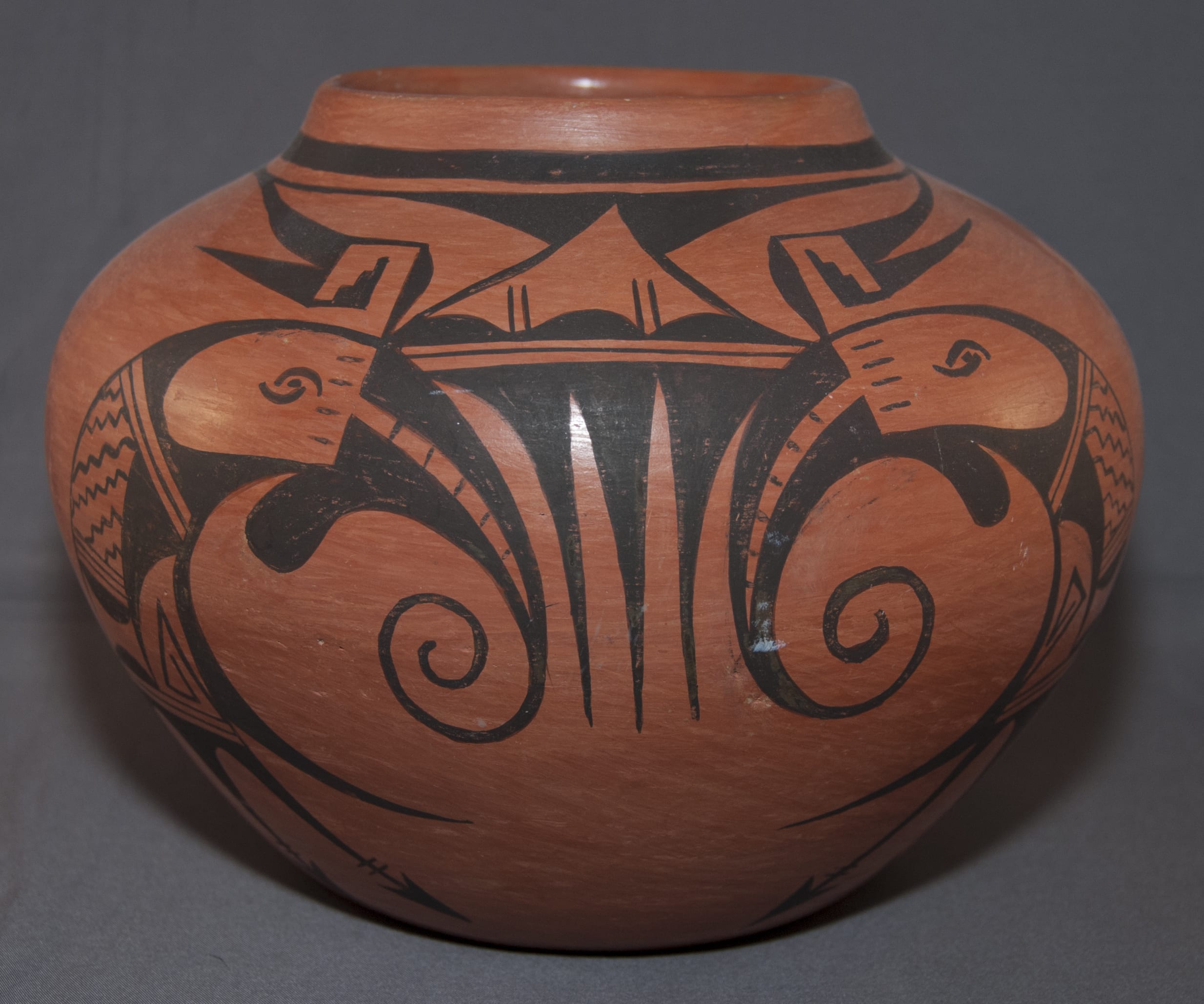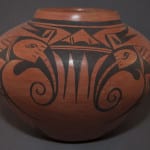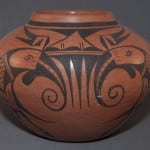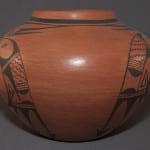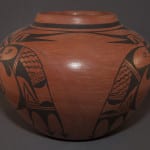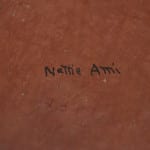Made of grey clay slipped with yellow clay (that fires red), this pot is well formed and thick-walled. The shape is a bit squat and it is surprisingly heavy for its size. The painting is monochromatic. Color contrast is provided by the tension between the red background and the black design. The painting, with its variation of the “man eagle” design, is exceptional.
A thick black line encircles the pot opening. The traditional thinner framing line below it incorporates elements of the design. Almost identical paired birds form the front and back designs. The top element—the head crests of the birds—flows backwards, merges into the thin framing line, and then joins the head crests of the birds on the other side of the pot, thus visually linking and unifying the overall design. Whereas Nampeyo (and other Hopi and Hopi-Tewa potters) often combine thick, heavy, linear designs with light, curvilinear designs to provide contrast and tension, all of the design elements on pot 2011-15 are delicate and curvilinear. Tension is forgone in favor of delicacy and grace.
The tension between the squat shape and the flowing lines of the design energizes the pot, as does the understated contrast between the red slip and the black design. This is not a flashy sports car; it is an elegant, black Bentley.
According to Charles King, Nettie Ami was born Nettie Tala Yumka Poocha in Polacca, Hopi. She was married to Glenn Ami (Ahmi). She was the mother of Leroy, Pearl, Alexander, Bettie, and Lolita Ami. She was making pottery by 1930 and continued through the 1980s. She was an active potter from 1940 to 1983. If Stanislavski et al. (1976) are correct, identification marks were not common on Hopi and Hopi-Tewa pottery in the mid 1970s. Since this bowl is signed with Nettie’s name, I assume that it was made toward the end of her career. A polychromatic jar by Netti with a bird design that has much the same form and spirit as on 2011-15 is shown in Jacka (1974:17).

